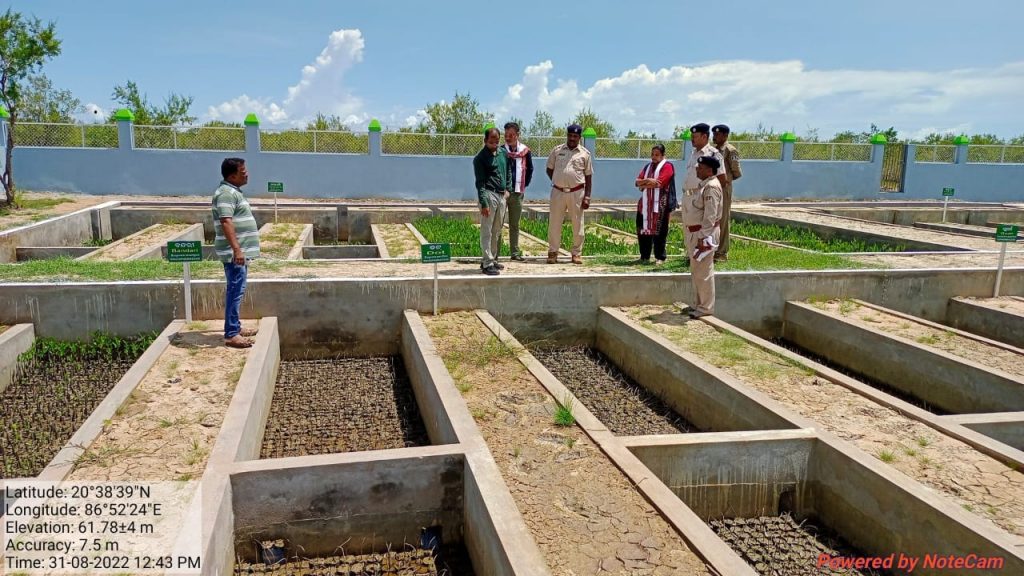Rajnagar: The Forest department here in Kendrapara district has launched efforts for the protection and expansion of mangrove forest cover in the Bhitarkanika National Park on Bay of Bengal coast. Several prawn gheries have mushroomed on the fringes of Bhitarkanika. These prawn gheries discharge toxic chemical effluents which flow into the rivers and streams inside Bhitarkanika and posed a severe existential threat to the mangrove forests.
Mangroves are amphibian shrubs or trees that grow in coastal saline or brackish water in harsh coastal conditions. Mangroves support sustainable coastal and marine ecosystems and act as a protective shield against tsunamis and extreme weather events like high tides, cyclonic storms as well as coastal erosion. Mangrove cover protects both land mass and coastline against cyclonic storms which occurs often in the state.
To ward of the threat, the Rajnagar forest division has established a mangrove meta nursery at Charigharia inside SuneiRupei reserve forest near Baunsagadi river adjoining the national park. 67 varieties of mangrove saplings will be grown here and later transplanted inside the national park. This is the first time nurseries have been established in a wetland like Bhitarkanika in the country which is famous for its mangrove forests.
No other wetland in the country has such a dedicated nursery for mangroves. The nursery was recently inaugurated by Jagnyadatt Pati, the divisional forest officer (DFO) of the Rajnagar forest division in the presence of ACF Poonam Hira Hansda, environmental researcher Prasanna Kumar Nayak, Rajnagar forest ranger Chittaranjan Behura and other forest officials. It has also established another nursery at Dangamal inside the national park to aid in growth of 67 species of mangrove saplings. The saplings grown in these forests will be used to increase the spread of mangrove cover inside the national park.
In the first phase, 35,000 saplings of 22 species like Rai, Sinduka, Garani, Banarua, Hental, Sundari, Karanja, Havali, Keruan, Sisumara, Paniamba, Kharisena, Bani, Guan, Paliachua, Data and Singada are being prepared in the Charigharia nursery. The saline water from Baunsagadi river is being drawn through sluice lines to this nursery to help in preparation of the saplings.
Moreover, the forest department has also undertaken various programmes to increase the spread of mangrove cover in the wetland. A report on forest survey of India-2021 prepared by Union Ministry of Environment and Climate Change claims that mangrove cover has increased the most in Odisha during last two years in comparison to other states. The mangrove cover in Odisha has increased by 8.34 sq km while the increase in mangrove cover in the whole country is only 17 sq km during last two years. The mangrove cover in Bhitarkanika alone is 7.76 sq km out of the total increase of 8.34 sq km of mangrove cover in the state. The state government and Centre are laying stress on increasing mangrove cover on the coastlines. India has 73 varieties of mangrove species out of the total 92 varieties found in the world. The Bhitarkanika wetland has all 73 varieties of mangroves.
